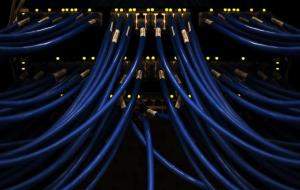Wireless Internet Service Providers (WISPs) often operate on tight margins, which means infrastructure upgrades are frequently delayed until problems become unavoidable. But as user demands climb and connected devices multiply, outdated network equipment can transform minor inefficiencies into major service disruptions. This article explores how upgrading to 2.5G PoE switches can help WISPs overcome common core network bottlenecks—and break through to better performance.
Identifying Common WISP Network Bottlenecks
Capacity demands grow is always the struggle of WISP networks. Three of the most common bottlenecks include:
1. Uplink Saturation on Gigabit Switches
Gigabit uplinks are no longer sufficient for high-density deployments. Packet loss, increased latency, and jitter start to emerge as the available bandwidth is maxed out.
A rural WISP serving multiple tower sites could experience ongoing packet drops during peak hours. The culprit? Gigabit switches unable to keep up with sudden traffic spikes. Upgrading to 2.5G PoE switches provided the extra bandwidth headroom needed to accommodate burst traffic, immediately improving service reliability.
2. Inadequate Power Delivery for Newer Devices
Legacy PoE switches often can’t support modern, high-wattage customer-premises equipment (CPE), access points, or surveillance cameras. This results in failed device boots, frequent resets, or long-term hardware damage.
Operator could find their PoE switches couldn’t power new CPE models requiring 25W or more per port. The solution is a fleet-wide upgrade to 2.5G active PoE switches, which offers both faster uplinks and higher per-port power budgets—eliminating the power failures completely.
3. Network Congestion from Limited Throughput
When core switches can’t handle the aggregate throughput from all distribution points, congestion occurs. This affects not only speed but overall QoS for end users.
Why 2.5G PoE Switches Solve These Issues
Upgrading to 2.5G switches provides a bridge between legacy gigabit and high-cost 10G solutions. They deliver more than double the speed over standard Cat5e cables, offer improved power delivery options, and support modern networking protocols.
Benefits at a Glance:
- Higher Uplink Capacity: Reduces congestion and packet loss.
- Improved PoE Budgets: Supports high-wattage devices with ease.
- Backward Compatibility: Works with existing cabling and devices.
Taking Action: When to Upgrade
If your WISP is experiencing any of the following, it’s time to consider a PoE upgrade for WISP networks:
- Frequent CPE power failures or resets.
- Complaints about slowdowns during peak hours.
- Difficulty scaling your network without adding more switches.
- Maintenance headaches due to aging or overloaded gear.
Conclusion: Stop Patchworking, Start Future-Proofing
Sticking with outdated gear may seem like a cost-saving move, but it often leads to higher support costs, unhappy customers, and lost business. Upgrading to 2.5G PoE switches is a strategic step toward solving today’s most pressing WISP network bottlenecks and preparing for tomorrow’s growth.
Don’t let congestion and power issues define your service. Make the move to 2.5G and experience the 2.5G switch benefits firsthand—fewer complaints, more uptime, and a network that scales with your ambition.
Upgrade now and prepare your WISP for the future of high-speed networking!



